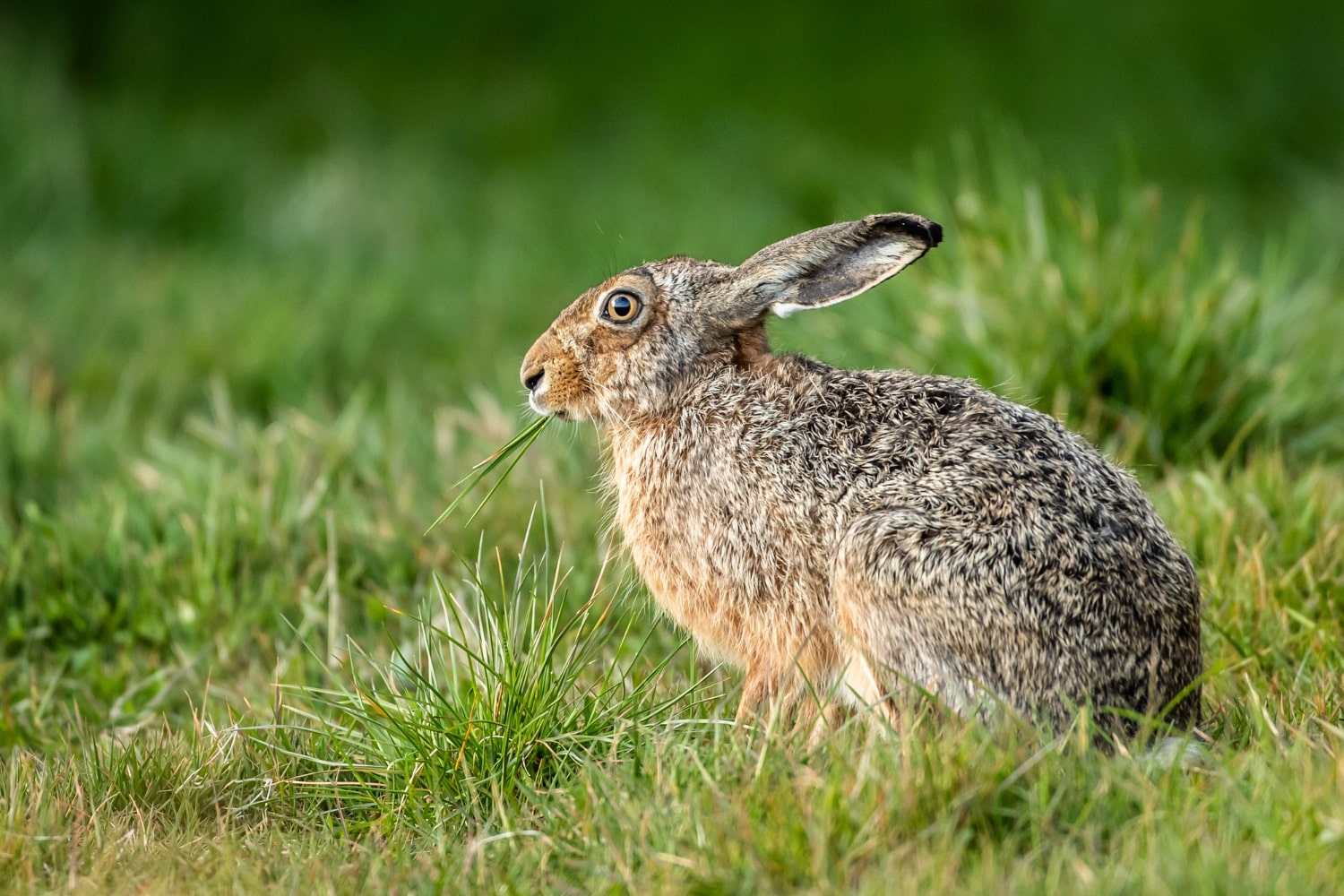Hares are among the most charming and clever animals in nature. They are famous for their long ears, incredible speed, and remarkable ability to adapt to various environments. In many cultures around the world, the hare symbolizes spring and the renewal of life. However, its daily existence is not just peaceful hopping across meadows — it is a constant struggle for survival. Below is a collection of fascinating and educational facts about these agile creatures that you may not know.
- Hares do not belong to rodents, as many people believe, but to a separate order called lagomorphs. They are distinguished by having double upper incisors. This feature allows them to gnaw through tough stems and tree bark with ease.
- Unlike rabbits, hares do not dig burrows. They live above ground, creating small depressions in the grass called forms. This way of living enables them to escape quickly when danger approaches.
- Hares are exceptionally fast runners. They can reach speeds of up to 70 kilometers per hour over short distances. Their powerful hind legs allow them to leap more than three meters in a single bound.
- To escape predators, hares rely not only on speed but also on cunning. They frequently change direction, make loops, and execute sharp turns. This unpredictable movement confuses their pursuers and increases their chances of survival.
- The long ears of hares serve not only for excellent hearing but also for regulating body temperature. During hot weather, blood circulating through their ears cools down, preventing overheating. This adaptation is especially useful for hares living in dry and arid regions.
- Hares have an almost panoramic field of vision. Their eyes are positioned on the sides of their heads, allowing them to see nearly 360 degrees around. The only blind spot they have is a narrow area directly in front of their nose.
- These animals are highly adaptable to climate conditions. In northern regions with heavy snowfall, hares change their fur color to white during winter. This camouflage helps them blend in with their surroundings and stay hidden from predators.
- Hares have an extraordinary sense of hearing and smell. They can detect the scent of a predator from several hundred meters away. This gives them enough time to flee and find shelter.
- Hares are solitary animals and do not live in groups. They only meet during the breeding season. Such behavior reduces the risk of being detected by predators.
- Female hares can give birth several times a year. Each litter usually consists of three to eight leverets. The young are born with their eyes open and covered with fur, unlike rabbits, which are born blind and hairless.
- Hares are herbivores. Their diet consists of grass, leaves, twigs, and bark. During winter, they feed on dry stems, moss, or the bark of young trees when other food sources are scarce.
- An interesting fact about hares is that they practice coprophagy — eating their own soft feces. This allows them to re-digest food and extract additional nutrients that were not absorbed the first time. It is a natural way for them to make full use of their food.
- In the wild, hares live an average of three to four years, but in captivity they can live up to ten. Their lifespan depends on factors such as predators, harsh winters, and food availability.
- The main enemies of hares are foxes, wolves, owls, birds of prey, and humans. However, their speed, alertness, and quick reflexes often help them escape. Since ancient times, hares have symbolized agility and cleverness.
- Although hares are usually considered silent animals, they can produce sounds. When frightened or in pain, they may emit a cry or a moaning-like noise. Such sounds often serve as a warning or occur moments before death.
- Even while sleeping, hares remain alert. Their ears stay upright, and they sleep in short intervals, constantly monitoring their surroundings. This instinctive vigilance is vital for survival in the wild.
- There are more than 30 species of hares in the world. They inhabit Europe, Asia, Africa, North America, and mountainous regions. Each species has unique traits, coloration, and behavior.
- The largest species is the Arctic hare, which can weigh up to seven kilograms. Its strong hind legs allow it to move swiftly across snow without sinking.
- Hares have an excellent memory and know their territory well. They use the same paths repeatedly, creating intricate networks of trails with many loops. This helps them quickly navigate and escape when chased.
- In culture, the hare is an important symbol. In Europe, it represents spring and fertility and is associated with Easter as the bringer of eggs. In Eastern traditions, the hare symbolizes wisdom and magical power.
- Few people know that hares are good swimmers. They use swimming to escape predators or to cross rivers. Their strong hind legs enable them to stay afloat and move efficiently in water.
- Hares are often the subjects of scientific research. Their physiology, fast metabolism, and adaptability help scientists study survival mechanisms in animals. Some findings are even used in medicine to better understand stress responses.
Hares are far more complex creatures than they appear at first glance. Their behavior, instincts, and adaptability are truly impressive. These interesting facts reveal the unique and diverse world of these swift and cautious animals. After learning about them, it is impossible not to admire their intelligence, agility, and resilience.





